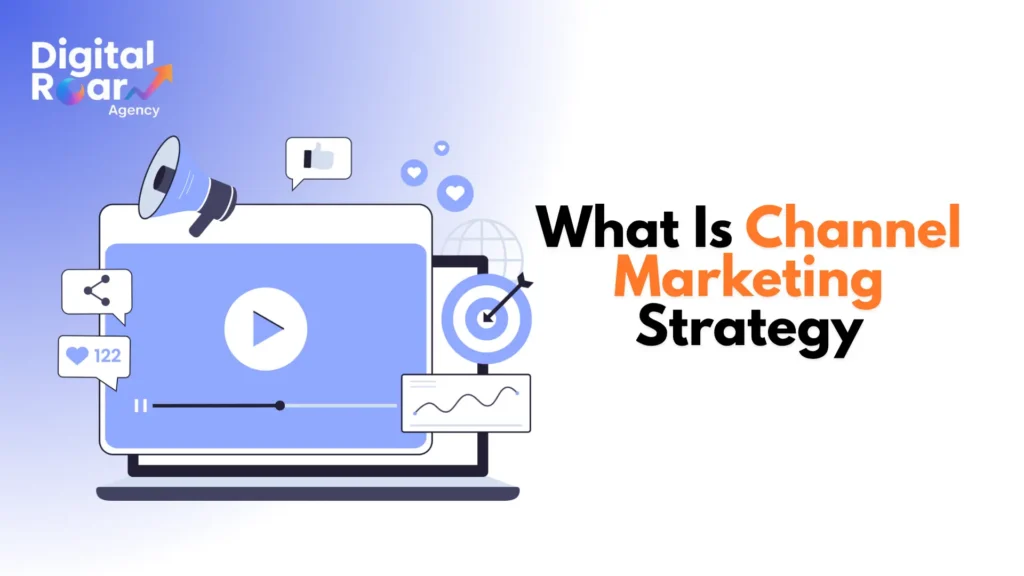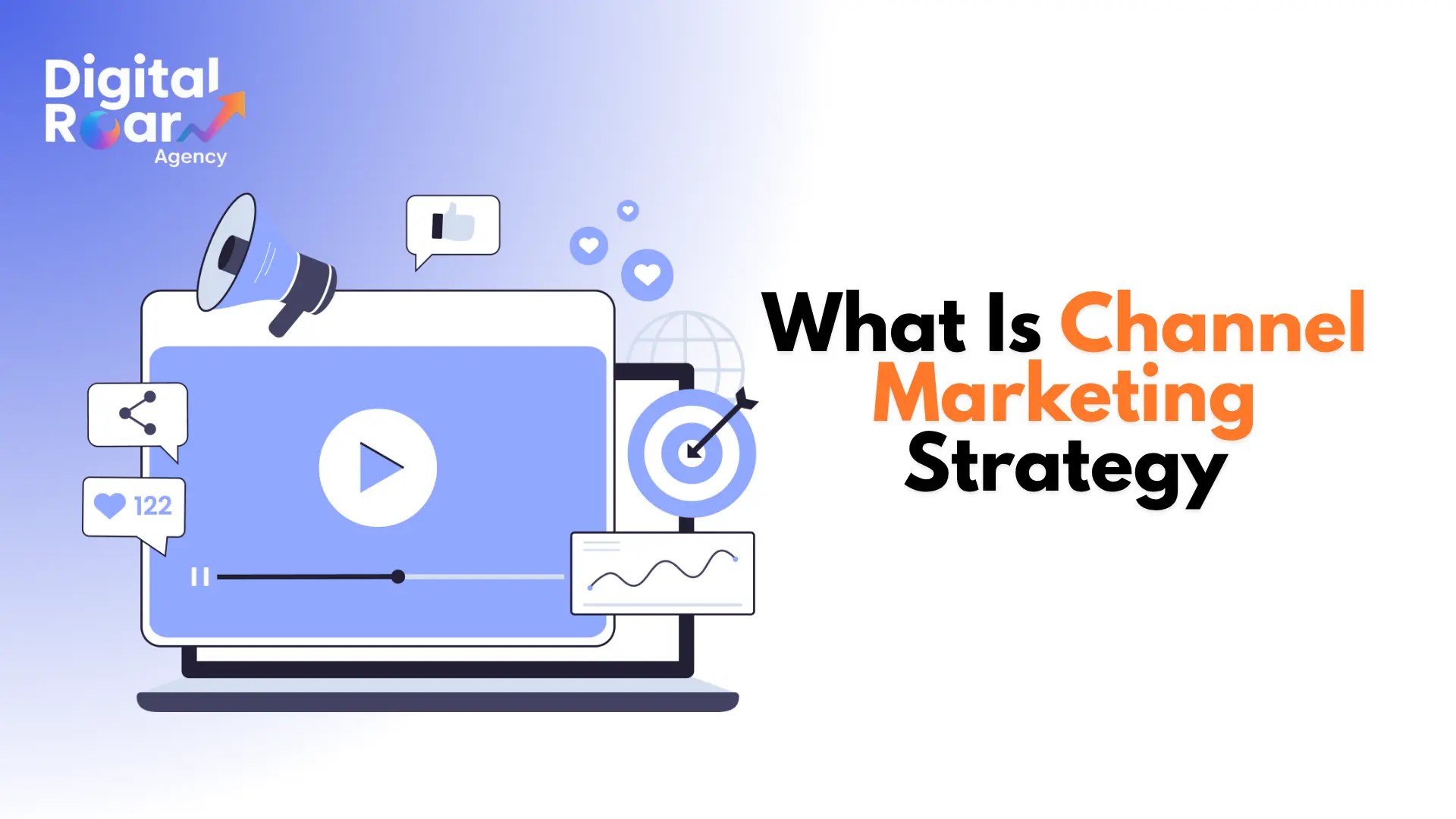What is channel marketing is a commonly asked question among many users. Businesses today operate in an environment where competition is intense, markets are global, and customer expectations are higher than ever. Relying only on direct sales and in-house marketing is rarely enough to achieve sustainable growth. Instead, companies need smarter strategies to extend their reach, build trust, and scale revenue without exponentially increasing costs. This is where channel marketing comes in.
But what is channel marketing exactly, and why does it matter? In simple terms, channel marketing is a strategy that involves using third-party partners such as distributors, resellers, affiliates, and retailers to market and sell products on behalf of a brand. Instead of handling every step of the sales process alone, businesses rely on intermediaries that already have networks, customer relationships, or industry expertise.
This guide is especially valuable for businesses entering new markets, expanding product lines, or scaling quickly. Channel marketing enables brands to leverage external resources, create shared value, and multiply their market presence.
Table of Contents
What Is Channel Marketing?
In its simplest form, channel marketing is about the use of third-party networks to deliver products to customers. Businesses do not just use a direct-to-consumer or direct sales model; they collaborate with intermediaries that already have access to the market.
Key Characteristics
Channel marketing focuses more on indirect sales, in which case partners like distributors or retailers engage with the customer relationships. It entails joint responsibilities, where the brand contributes tools, training and campaigns as partners make sales. It is very scalable because the companies may grow faster by using several partners and it is economical because the business does not have to establish massive sales activities in each market.
Why Businesses Use Channel Marketing
Channel marketing is used by businesses due to various reasons. It enables quick market penetration since the partners are familiar with the customers and have existing relationships. It further builds brand credibility as trusted resellers bring credibility. Moreover, the marketing responsibility is distributed with co-branded campaigns reducing overall expenditure. Lastly, it amplifies revenue streams by transforming each partner into another sales engine.
What Is a Marketing Channel?
A marketing channel refers to the path that a product or a service follows to reach the final consumer after passing through the producer. Consider it the path to purchase, all the intermediaries. Channels are of two major types.
Direct channels are the channels through which the company sells the products directly to the customers, including online stores or branded retail stores. Indirect channels are channels that use third parties, such as resellers, wholesalers, or affiliates. The selection of marketing channels affects the reach to customers, customer experience, and profitability.
Companies should strategically plan their channel approach in order to achieve maximum efficiency and ensure brand consistency.
What Is a Distribution Channel in Marketing?
The distribution channel term can be confused with the marketing channel. They are similar, but they differ in scope. A marketing channel encompasses the whole customer experience, including the promotion up to sales and delivery. In a distribution channel, the channel is specifically interested in the flow of products between manufacturer and consumer.
Levels of Distribution Channels
Distribution has a number of levels. A zero-level channel is a direct to consumer sale, including e-commerce stores. A channel of one level usually involves a retailer between the customer and the manufacturer. A two level channel is one that considers a wholesaler and a retailer and a three level channel may consider agents, wholesalers and retailers before the product reaches the consumer.
Common Examples
Two-level channels are common in Smartphone brands in some markets, with sales being made through wholesalers and retailers and at the same time direct online sales are available in other areas. This shows how companies are able to integrate channels based on their objectives and market conditions.
Multi-Channel vs Omni-Channel Marketing
Multi-Channel Marketing
Multi-channel marketing is a concept where multiple sales and marketing channels are used that are independent of each other. As an illustration, a brand can sell via its web page, web markets, and physical retail outlets. Nonetheless, these channels are not always integrated and customers might experience it differently based on the place of purchase. The advantage of this practice is an increased customer base and the opportunity to experiment with various mediums. The disadvantage though is usually a disjointed customer experience that complicates tracking and consistency.
Omni-Channel Marketing
Omni-channel marketing goes a step further in integration. It provides a smooth, uninterrupted customer experience at all touchpoints, both online and offline and via mobile. Customer can shop online and go to the store and shop again through the mobile without interruption. One such case is Starbucks, which combines its rewards app with online order and in-store transactions. This makes a cohesive experience that boosts loyalty and satisfaction.
Key Difference
The key distinction is that, in multi-channel, reach is achieved using distinct channels, and in omni-channel, an integrated and personalized experience is provided channel by channel.

What Is Channel Management in Marketing?
The best channel strategy must be executed correctly, and this is where channel management in marketing comes in. This is in form of selecting the right partners, providing them with resources, encouraging them to perform and tracking their contributions.
Responsibilities of Channel Management
The channel managers are required to hire the right partners, onboard and train them as well as enabling them in terms of tools required through enablement programs. They also need to develop and implement incentive packages like discounts, commissions, or marketing development funds (MDF). Furthermore, channel managers can overcome the conflict between partner and direct sales teams and also quantify the performance of partners to monitor ROI.
Metrics to Monitor
The key performance indicators are revenue generated by a partner, the speed of the deal, the rate of win, the level of engagement with a partner, and how incentive funds are used. Such metrics make sure that the business and partners are on the path to similar goals.
How to Build a Channel Marketing Strategy
Step 1: Define Objectives
All the strategies start with clear objectives. Businesses have to choose between pursuing a growth strategy in new markets, growing revenue, or cost reduction.
Step 2: Identify Target Customers
It is essential to know the target market. This involves awareness of customer demographics, purchasing behavior and channels of preference.
Step 3: Select Channel Types
The second step is selecting the appropriate combination of channels. This may be retailers, distributors, affiliates, value-added resellers (VARs) or a mix of these based on the product and market.
Step 4: Create a Partner Value Proposition
There must be a good reason why partners should sell your product. An attractive partner value proposal underscores the benefits to them, such as profits, incentives, or co-branded resources.
Step 5: Provide Enablement Resources
An example of effective enablement is the development of training resources, co-branded marketing resources, sales scripts, and portals to foster consistency.
Step 6: Design Incentive Structures
It is best to motivate partners using performance-based rewards, rebates, or MDF to stay dedicated to advertising your product.
Step 7: Launch Co-Marketing Campaigns
Co-branded events, webinars, and digital campaigns will enable businesses and partners to work together to generate demand.
Step 8: Track and Optimize Performance
Lastly, companies should quantify partner performance using KPIs and constantly optimize partner strategies.
Challenges in Channel Marketing
Channel Conflict
Conflict occurs when direct sales and partner sales teams are competing over the same customers. Tension can be minimized by clear guidelines, territory allocation, and open communication.
Partner Inactivity
Not every partner is equally devoted. Companies need to keep in touch, provide desirable rewards, and assess partner activity.
ROI Measurement
In multi-partner settings, attribution may be complicated. Integrated CRM systems and partner portals can be used to increase visibility.
Inconsistent Messaging
Customers can lose trust when partners provide mixed or wrong brand messages. It is more appropriate to provide standard branding kits and guidelines.
Examples of Channel Marketing in Action
Technology (B2B SaaS)
Microsoft has been using Managed Service Providers as an extension of its business in order to sell and tailor Office 365 to various markets all over the world without the need to construct offices in every single market.
Retail (Consumer Goods)
Nike uses a network of its own owned stores, a strong e-commerce platform, and retailer partners such as Foot Locker to establish a broad multi-channel strategy.
Digital Products (Affiliate Marketing)
Affiliate marketing has been an excellent example of Amazon Associates, in which content creators advertise products and receive commissions on sales.
Conclusion
So, what is channel marketing? It is a strategic model that enables companies to grow with its external partners who market, sell, and distribute products. A business can reach many more customers, establish credibility, and provide them with a consistent customer experience by utilizing the appropriate combination of channels, either multi-channel or omni-channel, and having good channel management practices.
When well implemented, channel marketing has the potential to not only spur a growth in revenue, but also the long-term relationships formed during channel marketing to enhance a brand presence within competitive markets.
FAQs About What is Channel Marketing
What is a marketing channel vs distribution channel?
A marketing channel is the general route between promotion and purchase whereas a distribution channel is concerned with delivery of products to the customers.
What is omni channel marketing?
Omnichannel marketing combines all channels to give a seamless and integrated experience.
What is multi channel marketing?
In multichannel marketing, various channels, including e-commerce, affiliates, and retail stores, are not integrated with each other.
What is channel in marketing?
A marketing channel is any pathway through which a business conveys its goods or messages to the consumers.
What is channel management in marketing?
Channel management encompasses the recruitment, enabling, motivation and monitoring of partners to facilitate steady sales growth.
How do I choose the right channel strategy?
Consider product type, target audience, pricing, and general market strategy to decide whether to use multi-channel or omni-channel.


